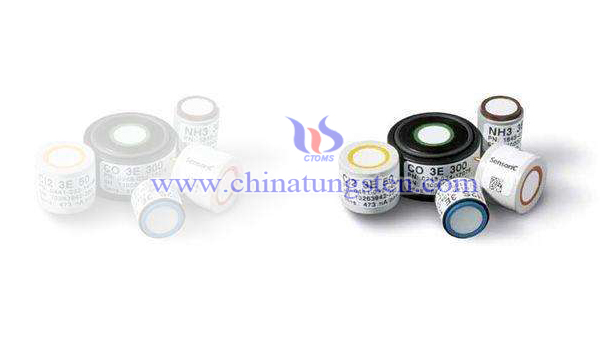Tungsten Trioxide Hydrogen Sulfide Gas Sensor
- Details
- Category: Tungsten Information
- Published on Friday, 04 October 2019 16:50
Hydrogen sulfide is a colorless gas with the odor of rotten eggs. Its toxicity is very strong. Its permissible concentration in the air is 10 ppm. The upper and lower limits of explosion range from 4.3% to 46.0%. The harm of hydrogen sulfide gas to human body belongs to chemical nerve toxicity, stimulation and asphyxiation gas, which can destroy red blood cells and cause olfactory stimulation at 0.1 ppm. Therefore, how to quantitatively detect trace hydrogen sulfide gas in the air has become an urgent problem to be solved in relevant workplaces.

Semiconductor gas sensor uses gas to adsorb on the surface of sensing material. When gas molecules or atoms are adsorbed on the surface of sensing material, the surface of sensing material will absorb or emit redundant electrons. As a result, the free electron density on the surface of the sensing material changes, so the resistance value of the sensing material changes, and the gas concentration is determined according to the resistance variation. Among them, most of the sensing materials used are metal oxides SnO2, WO3, ZnO, Ti2 and FeO3. Among them, the synthesis method of tungsten trioxide precursor used for hydrogen sulfide gas sensor is as follows:
Put 10 ml alcohol into 20 ml glass bottle, add 1.0 g tungsten chloride (WCl6), put a magnetic stirring rod into the glass bottle, and put the glass bottle on a rotating stirrer, rotating stirring to dissolve it. The total amount of 1.0 g of polyvinyl alcohol (PVA) was added slowly and stirred continuously until it dissolved completely.
The precursor of the prepared sensing material was deposited on 20 upper electrodes of the substrate 10 by screen printing or spin coating, and then thermal decomposed and sintered into tungsten trioxide sensing material layer 30 at high temperature. Then, the catalyst material was deposited on the tungsten trioxide sensing material layer by rotating coating, and decomposed at high temperature to form a catalyst layer 330. Then hydrogen sulfide gas sensor is obtained by wiring and encapsulating the signal wire 60 connecting the electrodes.
Sensitivity, reaction response time, resistance change and concentration, voltage change and concentration, selectivity and reproducibility of hydrogen sulfide gas sensor are tested. Taking the traditional hydrogen sulfide sensor as an example, the comparison of sensitivity and reaction response time shows that the gas sensor made of tungsten trioxide raw material has good performance for hydrogen sulfide. The selectivity has little effect on CO, CH4 and H2.
- Tungsten Oxide Manufacturer & Supplier, Chinatungsten Online: www.tungsten-oxide.com
- Tungsten News & Prices of China Tungsten Industry Association: www.ctia.com.cn
- Molybdenum News & Price: news.molybdenum.com.cn
- Tel.: 86 592 5129696; Fax: 86 592 5129797; Email: sales@chinatungsten.com



 sales@chinatungsten.com
sales@chinatungsten.com